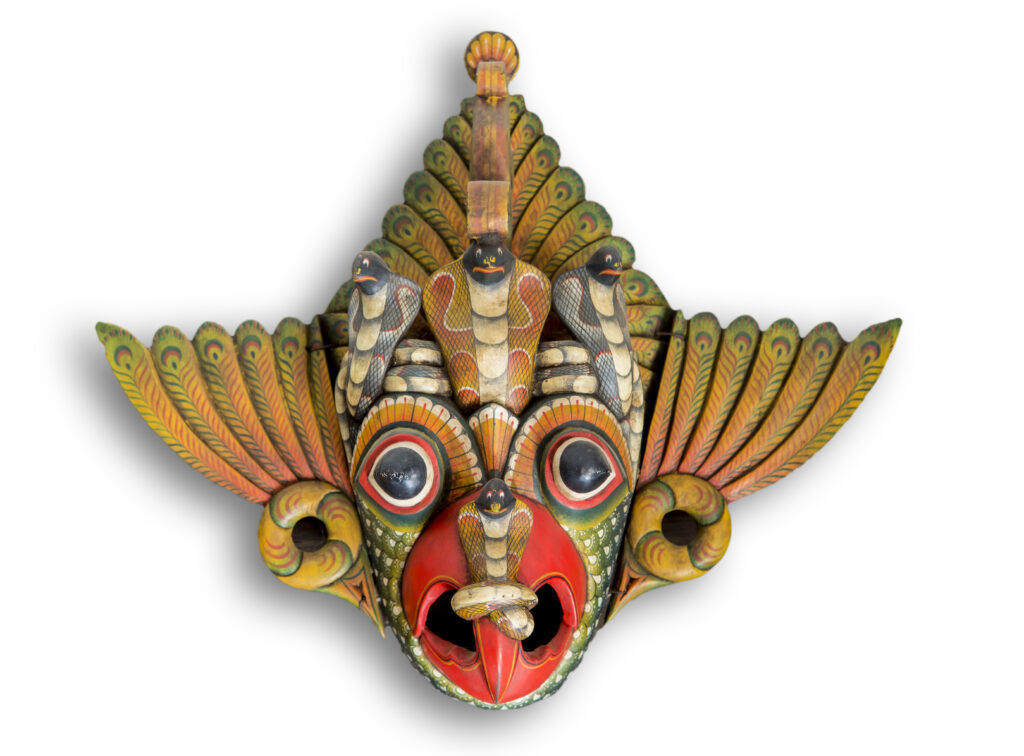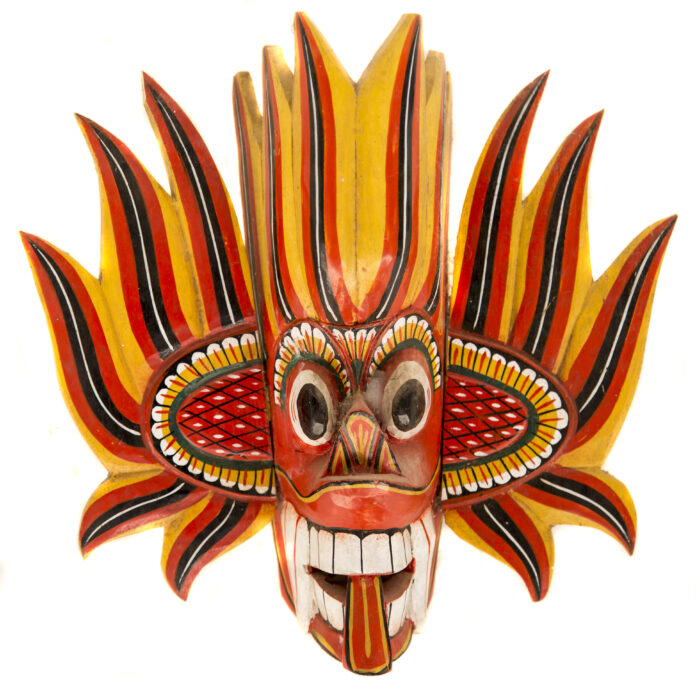By The Frontpage Journal
Sri Lanka’s rich cultural heritage finds vivid expression in its traditional mask-making, an ancient craft that blends artistry, mythology, and ritual. Among the most iconic creations are the Kolam and devil masks, each carrying deep symbolism and steeped in stories passed down through generations. These masks are not only theatrical props but living cultural artifacts that continue to enchant locals and captivate foreign visitors alike.
The tradition of mask-making in Sri Lanka is believed to date back over a thousand years, rooted in indigenous rituals and healing ceremonies. The masks play a vital role in Kolam performances—folk dramas that combine dance, music, and storytelling to entertain, educate, and ward off evil spirits. Meanwhile, the devil masks are often used in Sanni Yakumarituals, believed to exorcise illnesses and negative energies through elaborate ceremonies.
Creating a mask is an intricate process that requires skill, patience, and respect for tradition. Artisans typically use the wood of the Hal tree (Diplodiscus verrucosus), prized for its lightness and durability. The wood is carved by hand into bold, exaggerated facial features—wide eyes, flaring nostrils, and fierce teeth—that convey the mask’s character and power. After carving, the masks are coated with layers of lacquer and painted in vibrant colors using natural dyes. Each color and design element holds specific meaning, representing emotions, traits, or spiritual forces.
The Kolam masks tend to depict a variety of characters—from gods and demons to animals and common folk—each playing a role in the storytelling. Their shapes and colors are carefully chosen to reflect personalities and moods. The performances themselves are highly interactive, often improvisational, mixing humor, satire, and moral lessons. They remain a living tradition, especially in rural communities where festivals and temple events provide opportunities for these performances to come alive.

Devil masks, by contrast, are associated with healing rituals meant to protect individuals and communities from disease and misfortune. The Sanni Yakuma ceremony can last all night, with dancers wearing these masks invoking spirits through song, dance, and rhythmic drumming. The masks’ fierce expressions and striking designs are intended to intimidate and drive away negative energies. These rituals combine spiritual beliefs with theatrical spectacle, highlighting the profound connection between art and healing in Sri Lankan culture.
In recent years, the art of mask-making has gained renewed attention beyond its ritualistic context. Museums, galleries, and cultural centers across Sri Lanka showcase masks as artistic treasures, drawing interest from tourists and collectors. Some artisans have adapted traditional designs into decorative items or contemporary art pieces, blending old motifs with new styles to reach wider audiences.
Yet, the heart of this craft remains in the villages where it originated. Families of mask makers continue to pass their knowledge orally and through apprenticeship, safeguarding techniques and stories that might otherwise fade. The craft is a source of pride and identity, linking the past with the present through each carefully carved face.
For foreign visitors, Sri Lanka’s masks offer more than visual fascination. They open a door to understanding the island’s complex relationship with spirituality, community, and the power of performance. For locals, the masks remain symbols of protection, creativity, and cultural resilience.
The art of mask making in Sri Lanka is a testament to how tradition and creativity coexist. It invites us to see beyond the surface, to appreciate the stories, beliefs, and hands that shape these vibrant faces. In every mask lies a narrative waiting to be told—one of heritage, artistry, and the enduring spirit of the island.




